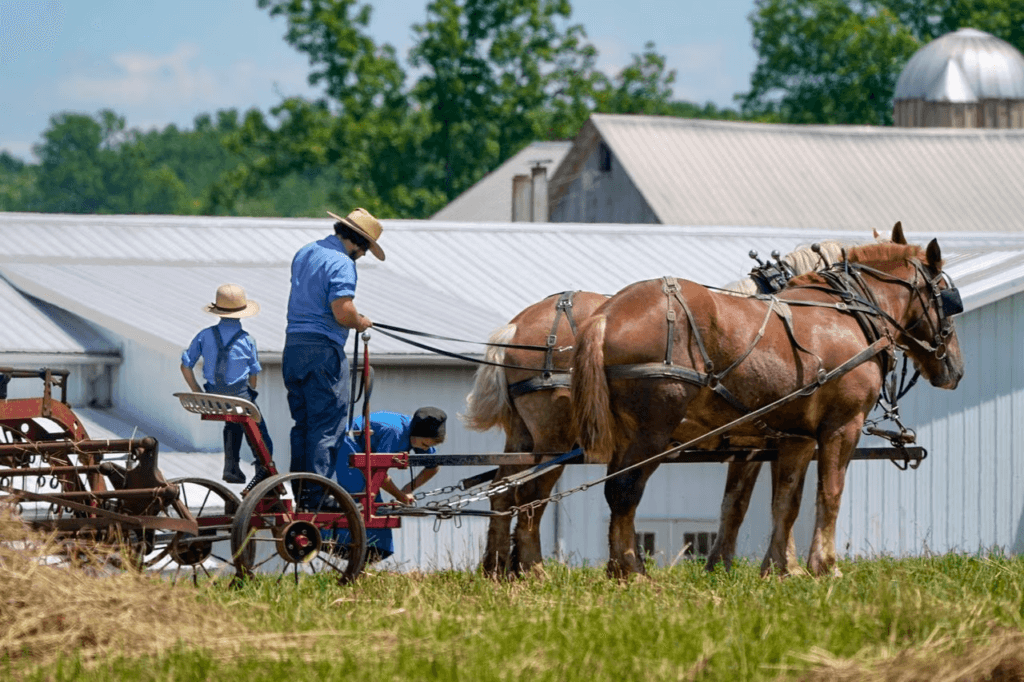How Religion Guides Amish Education and Work
Faith shapes every part of Amish life, including how they learn and earn a living. Education and work are not separate from religion—they are expressions of devotion. The Amish see both as ways to honor God, serve the community, and maintain a humble, disciplined lifestyle.
Religious Foundations in Education
Amish education begins at home and continues in small, local schools. Children typically attend school until the eighth grade, focusing on reading, writing, arithmetic, and moral lessons.
Religion is at the heart of learning. Teachers integrate biblical principles into lessons, teaching honesty, responsibility, and respect for others. Children learn that knowledge is valuable only when applied to God’s will and the betterment of the community.
Learning Practical Skills
Beyond academics, Amish education emphasizes practical skills. Children learn farming, carpentry, sewing, cooking, and other crafts essential for daily life. These skills reflect the belief that work is a form of service and worship.
Education prepares children for life in the community rather than for careers in the wider world. By focusing on practical skills, the Amish ensure that young members can contribute meaningfully to their families and neighborhoods.
Faith-Based Discipline
Discipline in Amish schools is rooted in religious values. Teachers encourage obedience, humility, and diligence. Misbehavior is corrected with guidance rather than punishment, reinforcing lessons of self-control and respect.
This faith-centered discipline extends into daily life. Children understand that their actions reflect their character and devotion to God. The connection between education and religion helps instill a sense of purpose and moral responsibility from an early age.
Religion and Work Ethic
Work is more than a necessity in Amish life—it is a spiritual practice. Every task, whether farming, woodworking, or household chores, is an opportunity to honor God and serve others.
This view is grounded in biblical teachings that emphasize labor, humility, and service. Amish people see diligent work as a way to cultivate discipline, patience, and gratitude. Unlike modern society, where work and spirituality are often separate, the Amish combine them seamlessly.
Community Service Through Work
Amish labor often benefits the community as well as the individual. Barn raisings, harvest help, and construction projects involve neighbors working together. These collaborative efforts reflect religious principles of mutual aid and fellowship.
By working collectively, the Amish reinforce bonds within the community. They demonstrate that faith is not just personal—it is expressed through helping and supporting others in tangible ways.
Adult Choices and Lifelong Learning
Even after formal education ends, religious values continue to guide work choices. Adults select occupations that align with community needs and personal skills, rather than personal ambition or profit.
Many Amish families run small farms, craft businesses, or service trades. Their focus is on sustainability, community benefit, and ethical practices. Religion encourages them to prioritize purpose and integrity over wealth or status.
Balancing Simplicity and Productivity
Religion also shapes the way the Amish approach technology and efficiency in work. While they avoid many modern conveniences, they adopt methods that align with faith and simplicity.
This balance ensures that work remains meaningful rather than becoming a source of pride or distraction. Tools and techniques are chosen to support productivity while maintaining spiritual focus.

Education and Faith in Daily Life
The integration of faith into education and work prepares the next generation to uphold Amish traditions. Children learn to view their studies, skills, and labor as ways to live morally and honor God.
Through this approach, the Amish ensure that religion is not confined to church services or prayer—it permeates every aspect of life. Daily routines become acts of devotion, reinforcing values of humility, discipline, and community service.
Conclusion
Religion is the cornerstone of Amish education and work. From childhood learning to adult labor, faith guides actions, decisions, and priorities. Education emphasizes moral lessons and practical skills, while work becomes a form of worship and community service.
By integrating religion into every facet of life, the Amish maintain a culture that values humility, diligence, and devotion. Their example shows that when faith shapes education and labor, daily life becomes meaningful, purposeful, and deeply connected to God and community.



